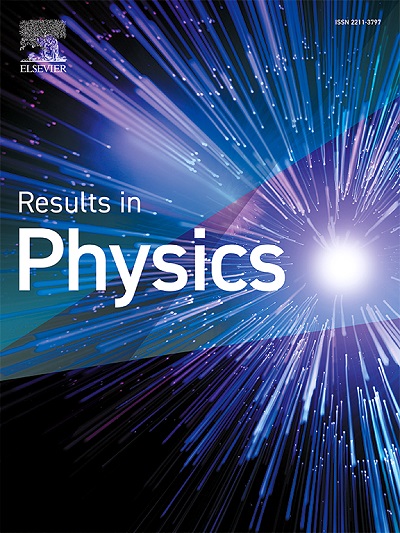具有粘性耗散和焦耳加热的非线性热辐射威廉姆森纳米流体流动
IF 4.6
2区 物理与天体物理
Q2 MATERIALS SCIENCE, MULTIDISCIPLINARY
引用次数: 0
摘要
在这项工作中,我们分析了非定常粘性不可压缩二维磁流体动力学(MHD) Williamson纳米流体在非线性热辐射、粘性耗散、焦耳加热、热溶质浮力、吸入/注入、热源/汇和对流边界条件下的流动。利用无量纲变量将Williamson纳米流体流动模型的控制方程无量纲化为无量纲非线性偏微分方程。得到了数值解,并给出了结果,并检验了不同控制参数对速度、温度和浓度场的影响,以及对物理量努塞尔数、舍伍德数和表面摩擦系数的影响。随着雷诺数、热格拉什夫数和溶质格拉什夫数的增大,速度剖面呈增大趋势,而随着磁性参数的增大,速度剖面呈减小趋势。辐射参数、温度比参数、Eckert数、热Biot数、热Grashof数越高,流体温度越高。随着施米特数、热泳参数和溶质比奥特数的增加,流体浓度分布呈上升趋势,而随着热比奥特数和布朗运动参数的增加,流体浓度分布呈下降趋势。通过将努塞尔数与辐射参数的关系与文献中已有的结果进行比较,证实了结果的准确性。本文章由计算机程序翻译,如有差异,请以英文原文为准。
Non-linear thermal radiative Williamson nanofluid flow with viscous dissipation and Joule heating
In this work, we analyzed unsteady viscous incompressible two-dimensional magnetohydrodynamics (MHD) Williamson nanofluid flow with effects of non-linear thermal radiation, viscous dissipation, Joule heating, thermo-solutal buoyancy forces, suction/injection, heat source/sink, and convective boundary conditions. The dimensionless variables are used to non-dimensionalize the governing equations of the Williamson nanofluid flow model into dimensionless non-linear partial differential equations (PDEs). Numerical solutions are obtained and the results are presented and examined for the effects of different governing parameters on the velocity, temperature, and concentration fields, and also on physical quantities Nusselt number, Sherwood number, and skin friction coefficient. The velocity profile observed increasing trend against the Reynolds number, thermal Grashof number, and solutal Grashof number while it is decreasing against the higher magnetic parameter. The temperature of the fluid increases for higher radiation parameter, temperature ratio parameter, Eckert number, thermal Biot number, and thermal Grashof number. The fluid concentration profile increases against the Schmidt number, thermophoresis parameter, and solutal Biot number while it declines for the thermal Biot number and Brownian motion parameter. The accuracy of our results are confirmed by comparing the Nusselt number against the radiation parameter with previous results in the literature.
求助全文
通过发布文献求助,成功后即可免费获取论文全文。
去求助
来源期刊

Results in Physics
MATERIALS SCIENCE, MULTIDISCIPLINARYPHYSIC-PHYSICS, MULTIDISCIPLINARY
CiteScore
8.70
自引率
9.40%
发文量
754
审稿时长
50 days
期刊介绍:
Results in Physics is an open access journal offering authors the opportunity to publish in all fundamental and interdisciplinary areas of physics, materials science, and applied physics. Papers of a theoretical, computational, and experimental nature are all welcome. Results in Physics accepts papers that are scientifically sound, technically correct and provide valuable new knowledge to the physics community. Topics such as three-dimensional flow and magnetohydrodynamics are not within the scope of Results in Physics.
Results in Physics welcomes three types of papers:
1. Full research papers
2. Microarticles: very short papers, no longer than two pages. They may consist of a single, but well-described piece of information, such as:
- Data and/or a plot plus a description
- Description of a new method or instrumentation
- Negative results
- Concept or design study
3. Letters to the Editor: Letters discussing a recent article published in Results in Physics are welcome. These are objective, constructive, or educational critiques of papers published in Results in Physics. Accepted letters will be sent to the author of the original paper for a response. Each letter and response is published together. Letters should be received within 8 weeks of the article''s publication. They should not exceed 750 words of text and 10 references.
 求助内容:
求助内容: 应助结果提醒方式:
应助结果提醒方式:


